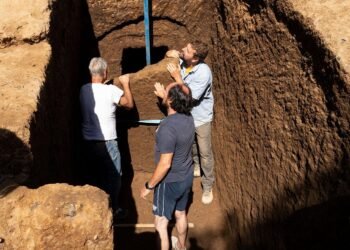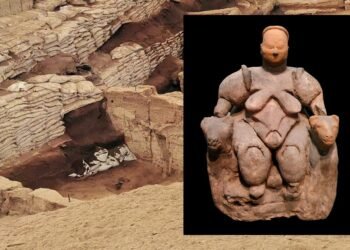The ancient culture of Ifẹ holds great significance in the history of Nigeria and the Yoruba people. Ifẹ, also known as the Ife Kingdom, was a powerful city-state located in present-day southwestern Nigeria.

It emerged around the 4th century CE and reached its peak between the 11th and 15th centuries CE. The Ifẹ culture is renowned for its remarkable artistic achievements, religious beliefs, and social organization.
One of the most striking aspects of Ifẹ culture is its exquisite artistry, particularly its bronze and terracotta sculptures. These sculptures depict human figures with intricate detailing and naturalistic features, showcasing the skilled craftsmanship of the Ifẹ artists.

The sculptures often depict royalty, important historical figures, and deities. They serve as a visual representation of the spiritual and cultural beliefs of the Ifẹ people. The art of Ifẹ has had a significant influence on subsequent African art movements and continues to inspire artists to this day.
Religion played a vital role in Ifẹ society. The people of Ifẹ believed in a pantheon of gods and goddesses associated with various aspects of life, such as fertility, agriculture, and craftsmanship. The supreme deity in Ifẹ religion is Olodumare, the creator of the universe.

The Ooni of Ifẹ, the traditional ruler of the kingdom, was considered a direct descendant of the deity Oduduwa, who was believed to be the progenitor of the Yoruba people. The Ooni held a central role in religious ceremonies and served as a spiritual leader for the community.
Ifẹ society was organized in a hierarchical structure with the Ooni at the top, followed by various noble families and lineages. The city-state had a system of governance that combined hereditary monarchy with a council of chiefs.
This social structure provided stability and facilitated the administration of the kingdom. Ifẹ was also known for its skilled artisans and craftsmen who specialized in various trades such as bronze casting, pottery, weaving, and beadwork. These artisans played a crucial role in creating objects of cultural and religious significance.
The Ifẹ culture had significant economic influence as well. The kingdom was strategically located along trade routes, allowing it to engage in commerce with neighboring regions. Ifẹ was a hub for the exchange of goods such as gold, ivory, beads, and textiles. The wealth generated from trade contributed to the prosperity and development of the kingdom.
The decline of the Ifẹ culture began around the 15th century, likely due to a combination of factors including political conflicts, internal disputes, and the rise of neighboring kingdoms. Despite its decline as a political entity, the cultural legacy of Ifẹ continues to resonate in Yoruba society and beyond.
The artistic achievements, religious beliefs, and social organization of Ifẹ are celebrated as significant contributions to African history and heritage. Today, Ifẹ remains an important archaeological site and a center for cultural tourism, attracting visitors from around the world who seek to explore the rich history and artistic heritage of this ancient civilization.






















Comments 0